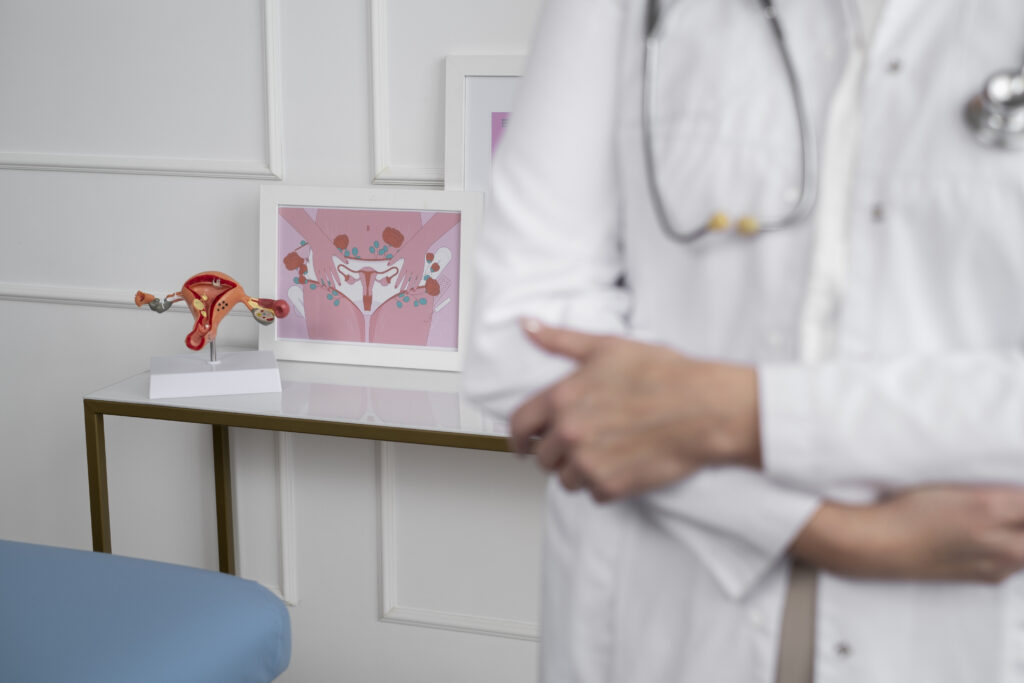Table of Contents
Are you and your partner struggling to have a baby and are not receiving results? Infertility can really be a difficult and emotional phase of life, especially when someone has been struggling with it for a long time. One’s fertility can be affected by many factors, such as the percentage of healthy sperm possessed by a man, the day when ovulation sets in, a woman’s menstrual cycle track, and whether she is regular with it or not. These aspects might act as the blockage that makes conceiving a little bit difficult.
A common reason for infertility in women is the blockage of the fallopian tubes. To identify this issue, fertility specialists typically suggest an HSG test.
So what exactly is an HSG test?
Hsg is an X-ray procedure used to examine the valuable insights of the uterus and fallopian tubes. It is done to determine if the fallopian tubes are open, blocked, or partly blocked.
This test is usually done in younger females where there is no other factor involved.
But also, before conducting the HSG test, it is mandatory to evaluate male fertility by the specialist. The semen analysis should be absolutely normal before proceeding.

In the test, a material called contrast (dye) is injected into the uterine cavity through a metal cannula.
A series of X-rays, or fluoroscopy, follow the dye as it moves through the uterus and tubes, which appear white on X-ray film. If the X-ray reveals the dye flowing through the fallopian tubes into the pelvis, it indicates the patent fallopian tubes; if it doesn’t, that means there is some blockage in the fallopian tubes.
What Causes Blockage in Fallopian Tubes (Identified by HSG Test)
- Pelvic Inflammatory Disease (PID): The infections in the reproductive system can cause scarring and blockage of the tubes.
- Endometriosis: In this condition, the tissue similar to the uterine lining grows outside the uterus. If this tissue grows in the fallopian tubes, it can cause inflammation, scarring, and blockage of the tubes.
- Past Infections: Sexually transmitted diseases such as chlamydia or gonorrhoea can cause damage and scarring to the tubes.
- Ectopic pregnancy: Any history of pregnancy that is not in the uterus can cause scarring or damage to the tubes.
- Surgery in the pelvic region: There may be adhesions due to surgeries that involve the abdomen or the reproductive organs.
- Uterine fibroids: submucosal fibroids or the larger fibroids in the uterine cavity can cause tubal blockage.
- Tubal Ligation or Reversal: Any history of surgical tubal ligation for permanent birth control or reversal will scar the tubes.
- Congenital Abnormalities: Some women may be born with some structural problems in their reproductive system.
What if the HSG test reveals that the fallopian tubes are blocked?
How can you achieve a healthy pregnancy? Here’s what you need to know
If the Hsg (hysterosalpingography) test reveals that the fallopian tubes are blocked, it can affect fertility since these tubes are crucial for the egg’s journey from the ovaries to the uterus for fertilization. Fortunately, there are several medical options available to assist with achieving pregnancy:
Treatment Options:
- Laparoscopy: A surgical technique that gives a physician a direct look at the fallopian tubes. In cases where the blockage is caused by minor issues such as mucus or slight adhesions, fertility medications may be beneficial.
- Tubal Surgery: This is the surgical procedure in which the blocked area or the damaged tubes are removed. It usually works better if only one tube is blocked, or the blockage is very close to the uterus.
- Hysteroscopic Cannulation: This is a minimally invasive procedure in which the catheter is used to open the blocked tubes.
- In Vitro Fertilization (IVF): If the tubes are severely blocked or surgery is of no use, the best choice of treatment is IVF because this process bypasses the fallopian tubes entirely. In this process, eggs are taken and fertilized outside the body, and then transferred directly to the uterus.
- Lifestyle Adjustments: Maintaining a healthy weight, avoiding smoking, managing stress, and following a balanced diet can all contribute to better overall fertility health.
For more information or personalized guidance, please contact us through our official website at https://www.babysoon.co.in/. You can conveniently schedule an appointment online for a consultation with our knowledgeable specialists at +919311063063 or 1800123363363.
We invite you to visit our clinic, where our committed team will offer you expert care, address all your inquiries, and assist you in exploring the best options for your fertility journey.
People also ask for:
Q1. What are the risks associated with the HSG test?
The HSG test is generally considered safe. However, like any form of medical intervention, some level of risk applies. You’d feel the minimal cramping or discomfort you normally do during or after the procedure, but usually it wears off after several hours. You may also take a risk of infection or even any bleeding or injury to your uterus or your fallopian tubes. Sometimes, though rarely, the dye used might cause allergic reactions in a woman. You could best seek guidance from your doctor prior to any such procedure concerning your risk factor and the precaution you need to take.
Q2. Is the HSG test painful?
Generally, the HSG test is associated with discomfort, though its degree differs in various women. Women will experience mild to moderate cramping or even pressure during the process, and it lasts only for a few minutes. Some women experience cramps or some light spotting after conducting the test, but it should be gone in a couple of hours. You can even use over-the-counter pain medication. You can report any pain experienced to the doctor before your test so that they can advise on what you should do.
Q3. How long does the HSG test take?
An Hsg test usually lasts about 15 to 30 minutes. While the actual procedure is fairly quick, you might need some extra time for preparation and to go over the results with your doctor afterward. It’s a good idea to set aside a little more time for the whole appointment, but most women can anticipate getting back to their regular activities shortly after the test.
Q4. What should I expect after an HSG test?
After the Hsg test, a woman may feel some mild cramping that may be as strong as menstrual cramps, which may last for a few hours. She might also experience some light spotting or bleeding, which is normal and usually resolves in a day or two. She should rest and avoid heavy exercise for the rest of the day. Contact your doctor if you are experiencing such signs of intense pain, heavy bleeding, fever, or an indication of infection. Results will likely be conveyed either by your physician the very next time he meets you following the procedure or even scheduling an appointment with him.
Q5. Can I try to conceive after an HSG test?
Yes. Indeed, some women have also reported having more children after the test, particularly if small obstructions were removed.

